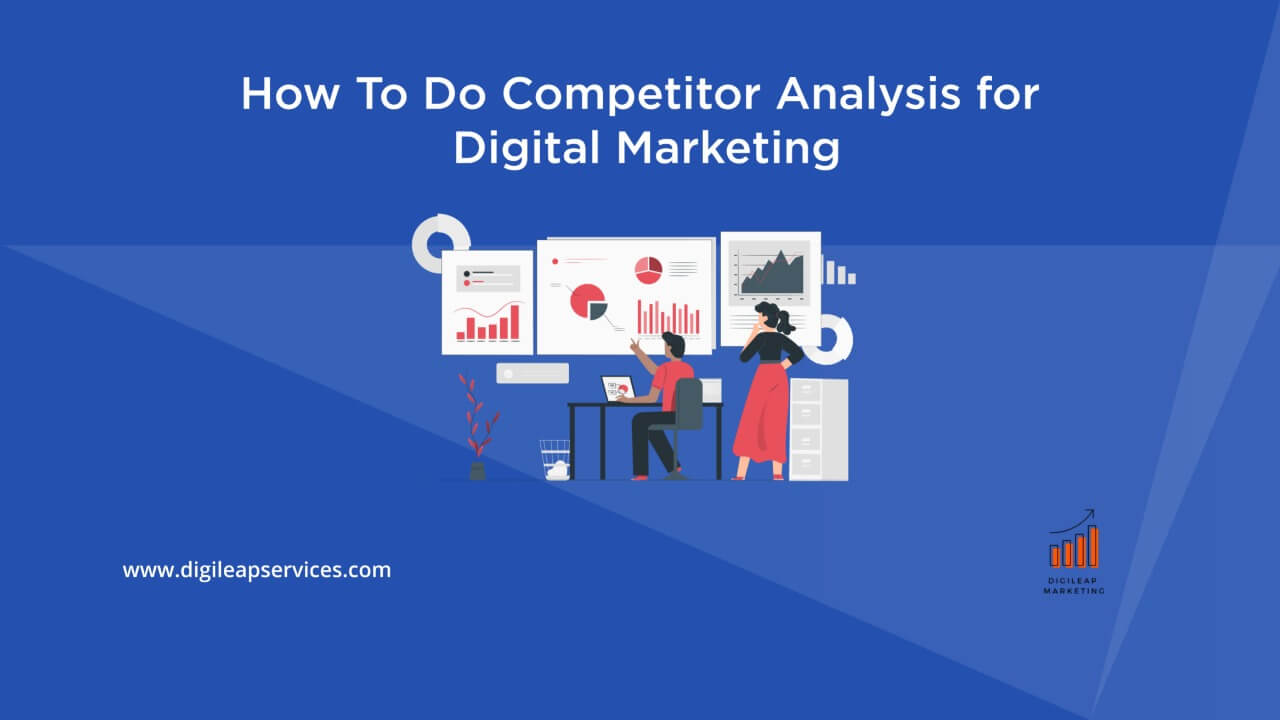How To Do Competitor Analysis In Digital Marketing?
Identifying your target client base and understanding how to attract them to your business effectively is only half the battle for better search engine optimization. Thus, what about your competitors’ actions?
We are constantly astounded by how few prospects and organizations undertake extensive competitor analysis. It not only provides insights into where your competitors are excelling. But it may also provide you with fresh digital marketing ideas to include in your plan to improve traffic and conversions with the help of google analytics tools.
What is Competitor Analysis?
A competitive analysis is a study of how your rivals differentiate. Their brand by evaluating their product mix, marketing tactics, brand voice, customer reputation, and other factors. A thorough competition study swiftly converts into a business and marketing plan that positions. Your company to generate new competitive advantages and brand strategies.
Benefits of Conducting Competitive Analysis in Digital Marketing
A detailed competition study can assist you in fine-tuning your target market and segmentation. It not only helps you better understand the current status of your industry, but it also offers you an action plan for your company’s present and future, among other advantages.
Understand Your Target Customer
For startups, it gives you a better grasp of your market. By examining why your target clients visit specific firms, you may identify where your company fits in and how to market yourself properly. Your target market may wind up desiring a completely different product or experience,. Or you may decide to pick an altogether new target market based on your findings. As a result, digital competition analysis enables more precise and accurate market predictions.
Understand Your Competition
The competitor analysis, as the name indicates, gives a complete insight into your competitors. It’s critical to keep an eye on what they’re doing in terms of product offers, customer experience, and general web presence so you can outperform them while addressing your own company’s shortcomings. Competitive analysis may offer your team a framework for analyzing rivals over time and monitoring their market share and the debut of new players in the industry.
Expand Your SEO Strategy
Because SEO is such an essential part of digital competition analysis, it may help you build more effective keyword research and content planning methods. Your competitors may be more in tune with what your target audience wants to read, but you can figure out how to attract visitors with the proper keywords and conversion-oriented content. It also teaches you which keywords to track for changes in volume, ranking, and ranking difficulty.
Better Projections and Budget Forecasting
Finally, one of the underappreciated advantages of a competitor analysis is that it enables more accurate budget predictions. Analyzing the competition will help you identify which marketing areas need to be beefed up and which can withstand budget cuts. You’ll have a better idea of how much you can anticipate spending shortly if you have a good SEO plan and market position analysis based on your competition study.
How to Do Competitive Analysis in Digital Marketing
Have a Clearly-Defined Marketing Goal
Finally, what is the goal of your marketing campaigns? Higher revenues and lower operational expenses are nearly always the ultimate aim for every business owner, but numerous measures must be performed first. There are many social media tools for marketing that also follow the social media algorithms. Discuss with your teams your long-term business goals and how digital marketing fits into those strategies. How does evaluating your competition’s online presence assist you in achieving these objectives?
If you want to increase your sales, look at what’s working and what’s not, as well as what your competitors are doing with lead magnets. Hiring more social media managers and specialists, as well as advertising on these platforms, may be necessary to increase your social media presence. It all starts with determining a marketing objective.
Have a Clearly-Defined Target Customer
A target audience may differ from a target client, so you must learn more about the latter and have well-researched and refined buyer personas to advertise to them more successfully.
What types of websites does your ideal customer visit? And their interests, values, and preferences. And about there their ages, where do they reside, and what other types of demographics are they likely to fall into? Your former customers can help here, but so can your competitors’ customers. Also there are different marketing strategies for twitter to understand the algorithm. Determine what kind of branding images and material are most likely to connect with them and entice them to engage with you. As well as the channels they are more likely to utilize, such as email marketing or social media.
Know Which Digital Marketing Channels You Want to Focus On
It may take some trial and error to determine which digital marketing channels to prioritize. But you can start with a list of sites you believe your potential customer is most likely to visit. Paid search advertisements for a food delivery service. For example, that run around dinnertime, are more likely to generate sales than a social media post that may get lost in their feed or not be viewed at all.
Make a priority list of channels, such as social media, email, display advertisements, YouTube advertising, and content. Find out which ones get the most and most minor traction and why. This will aid in the refinement of your entire marketing approach.
Identify Key Competitors to Focus On
Now is the moment to hone in on the rivals you want to examine based on the type of client you’re targeting and the digital marketing channels to emphasize. Preferably, you should have one contestant from each of the previously mentioned groups. However, depending on your product mix and field, you may not have much competition; however, you should still strive to study three to five firms.
Analyze Competitor Marketing Positions
Differentiating your brand in the market is what positioning is all about. Many brands sell the same goods. But there is a reason why they have the reputation and following that they have.
So, how are your competitors differentiating themselves, and how are you differentiating yourself? For example, you may use identical branding marks, font faces, or iconography as your rivals yet have an entirely distinct color palette. A humorous and casual brand voice may work well for a young apparel business, but will it work for a worldwide law firm. If your competitors seem studious and severe in their communications?
Determine how you can distinguish yourself from them since this will make your brand more recognizable. There are different marketing strategy for applications also. Make scorecards for different branding materials, communication styles, customer experience, and social media presence. Use these scorecards for additional branding and differentiation initiatives, like content development and thought leadership (e.g. podcast appearances, magazine interviews).
Wrapping Up
To summarise, competition marketing is critical for your marketing plan, therefore conduct thorough research. After all, marketing research about your rivals will be beneficial to you.
Competitors aren’t always monolithic. They aren’t always firms that provide the same products and services as you, yet they are a sort of competitor. However, in a digital marketing setting, a digital competitor study is critical. Since people use the internet to discover more about constantly changing businesses. DIGILEAP MARKETING SERVICES.












